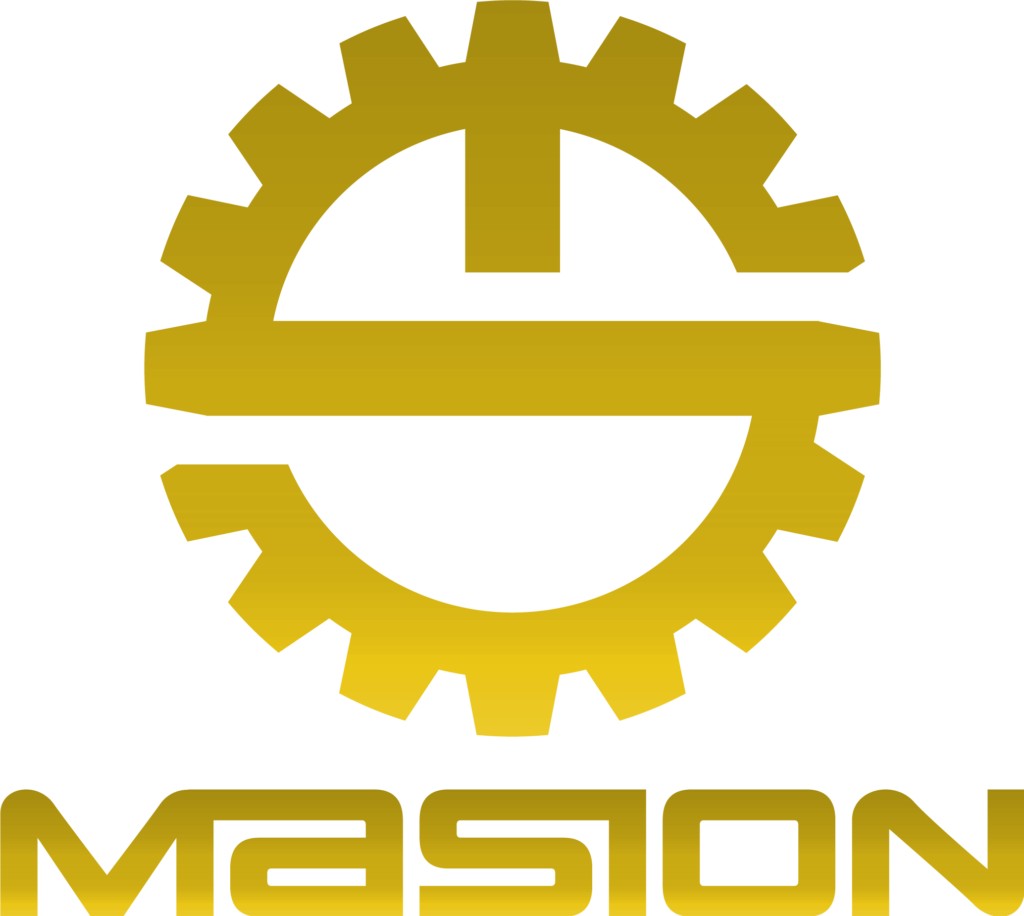CNC Machining Bronze
CNC Machining Bronze
There are many types of bronze, with commonly used ones including phosphor bronze, tin bronze, and aluminum bronze. Additionally, there are less commonly used types like beryllium bronze, silicon bronze, manganese bronze, and chromium bronze. Bronze exhibits good electrical conductivity, thermal conductivity, wear resistance, corrosion resistance, plasticity, and toughness. It is generally used in the manufacturing of products such as copper sleeves, copper bushings, copper worm wheels + worm gears, copper guide plates, copper ball seats, and copper nuts.
CNC milling Bronze
CNC Milling Bronze
CNC milling bronze is a machining process utilizing CNC machining centers. It involves securing the bronze workpiece using fixtures and then using cutting tools to remove excess material from the surface of the bronze to achieve the desired shape. In bronze milling, guide blocks are commonly machined components.
The advantages of bronze milling include high machining precision and excellent surface quality. However, achieving successful machining requires experience and technical expertise; otherwise, it may result in defective products.
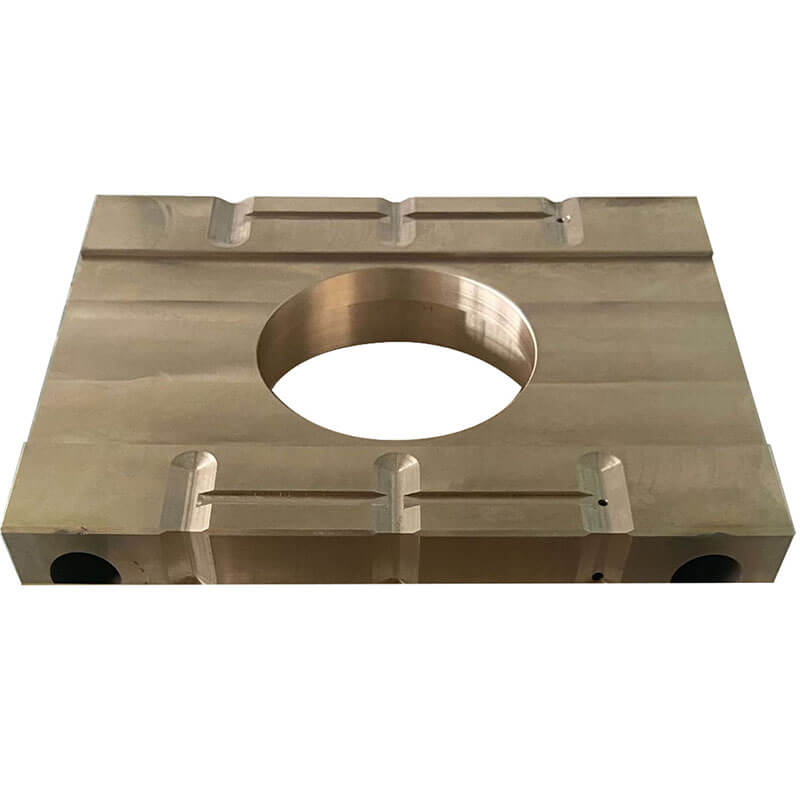

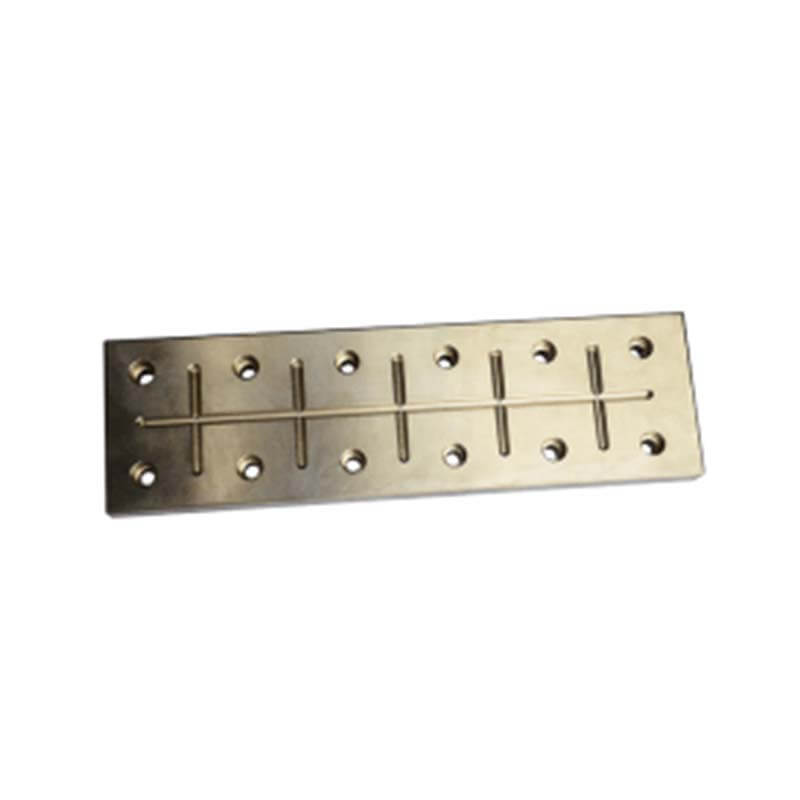
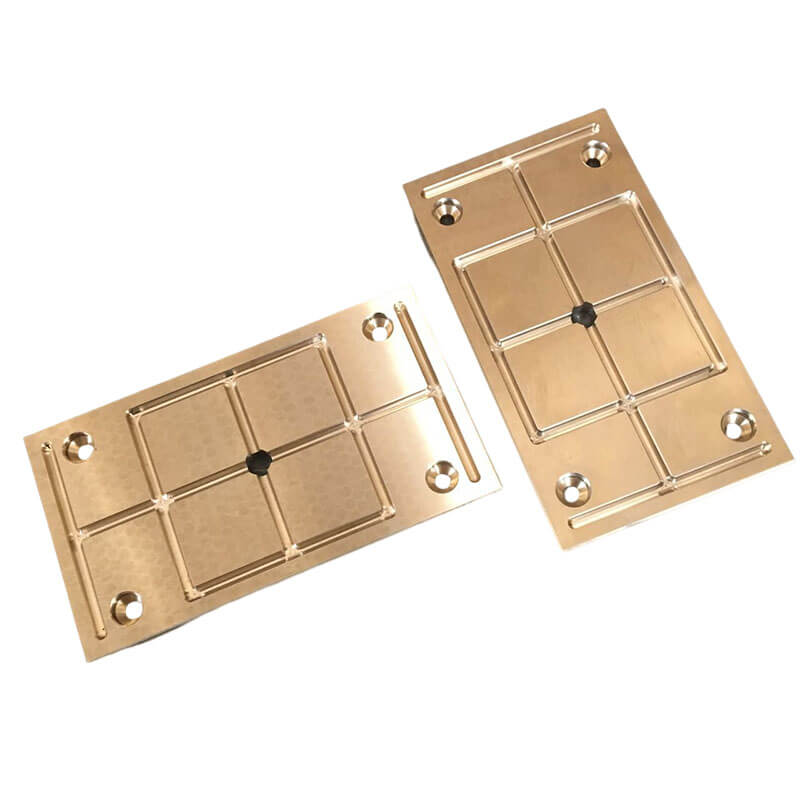

CNC Turning Bronze
CNC Turning bronze is one of the most commonly used machining methods. Typically, similar to turning with other metals and plastics, turning bronze involves rotating the bronze workpiece on a CNC lathe and then using cutting tools to perform cutting motions, removing excess material, and shaping the workpiece into various rotational forms.

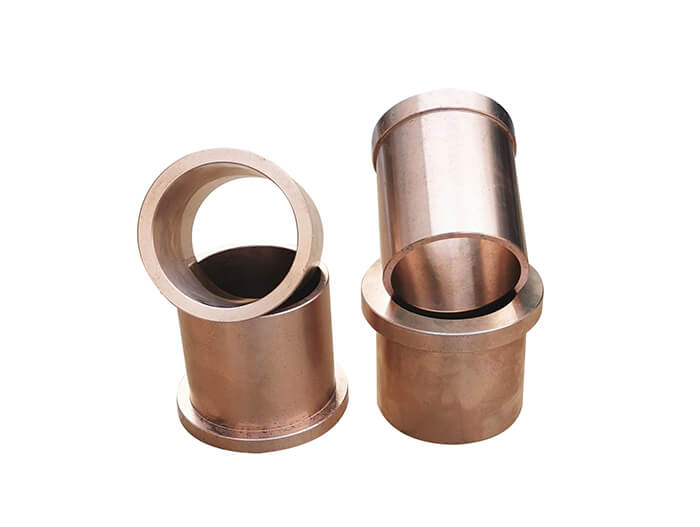


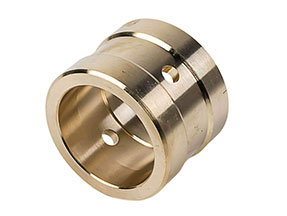
Surface Treatment Methods for Bronze
Due to the characteristics of bronze, it is prone to rust and corrosion in high humidity environments. Copper, being a metal with amphoteric properties, easily reacts with other substances in the air, leading to rusting and the formation of copper patina. While regular use can mitigate these issues, prolonged storage may result in damage to the surface of the bronze. Many people are unsure how to treat the surface of bronze. Here are some methods to address this.
Copper Cleaning Agent
The simplest method is to use a copper cleaning agent, which is a common way to treat the surface of bronze and is also suitable for other copper materials such as red copper and brass. A copper cleaning agent can be used to remove surface oil, fingerprints, oxidation, and more.
Polishing Treatment
If you want to restore the shine of the bronze surface, polishing treatment can be employed. Using a copper electrolytic polishing solution for this purpose not only enhances the surface brightness but also quickly removes rust and oxidation, restoring the natural luster of the bronze.
Passivation Treatment
For long-term maintenance of the treated surface, passivation treatment can be chosen. This method effectively addresses surface issues. Even if stored in the air for a year or longer after treatment through methods such as ultrasonic and immersion, the surface remains in good condition. Therefore, this treatment is highly effective.
In summary, different treatment methods can be chosen based on the severity of surface issues with bronze.
CNC Machining Bronze FAQs
Phosphor bronze is typically tin-phosphor bronze. Tin-phosphor bronze is a type of bronze alloy with tin and phosphorus as the main alloying elements. It contains 2-8% tin and 0.1-0.4% phosphorus. It is mainly used for wear-resistant parts and elastic components.
Common Grades: China QSn10-1, QSn6.5-0.1, QSn7-0.2, QSn8-0.3, QSn4-0.3, QSn4-3, ZQSn10, ZQSn5-5-5, ZQSN6-6-, C5191, C5210, C51900, etc.
In industry, it is mainly used for wear-resistant parts and elastic components such as computer connectors, mobile phone connectors, high-tech industry connectors, springs for electronic and electrical applications, switches, slots for electronic products, buttons, electrical connectors, lead frames, vibration plates, and terminals, etc.
Phosphor bronze has higher corrosion resistance, wear resistance, and does not spark during impact. It is used for medium-speed and heavy-duty bearings with a working temperature of 250°C. It features automatic self-centering, insensitivity to deviation, even bearing load, high carrying capacity, simultaneous radial load, self-lubrication without maintenance, and other characteristics.
Tin-phosphor bronze is a copper alloy with excellent conductivity, low heat generation, and hard connection electrical structure of plug-in spring sheets without rivet connections or friction contacts, ensuring good contact, good elasticity, and smooth plug-in. The alloy has excellent machinability and chip performance, allowing for a quick reduction in part processing time, etc.
Phosphor bronze is also commonly used as the reed material for harmonicas.
Phosphor bronze has higher corrosion resistance, strength, and hardness compared to tin bronze, and it exhibits better flowability and processability than tin bronze.
Aluminum Bronze:
Aluminum bronze typically contains aluminum content generally not exceeding 11.5%. Sometimes, small amounts of elements such as iron, nickel, manganese, etc., are added to further improve its performance.
It is machinable, weldable (not easily brazed), and processes well under hot working conditions.
It offers excellent corrosion resistance and does not produce sparks under impact, making it suitable for manufacturing spark-free tool materials. It has an excellent thermal conductivity and stable rigidity, making it suitable as a mold material.
Common domestic grades:
QAL7: Has high strength and elasticity, with high corrosion resistance in the atmosphere, fresh water, seawater, and certain acids. Can be hot or cold worked, electrically welded, and gas welded, but not easily brazed.
Applications: Springs, corrosion-resistant elastic components, and others requiring corrosion resistance.
QAL9-4: Offers high strength, good anti-friction properties, and excellent corrosion resistance. Can be hot worked and welded but is not easily brazed.
Applications: High-strength, wear-resistant parts, such as bearings, bushings, gears, turbines, etc. Also used for making nozzle connections, flanges, flat rocker arms, brackets, etc.
QAL10-4-4: Exhibits stable mechanical properties below 400°C, good anti-friction properties, and excellent corrosion resistance in the atmosphere, fresh water, and seawater. Can be hot worked and welded but is not easily brazed.
Applications: High-strength wear-resistant parts operating below 400°C, such as bearings, bushings, gears, ball seats, nuts, flanges, etc.
Tin Bronze:
Tin bronze is a type of bronze primarily alloyed with tin. It is mainly used for the production of elastic components and wear-resistant parts.
Deformation tin bronze has a tin content not exceeding 8%, and sometimes elements like phosphorus, lead, zinc, etc., are added. This alloy has higher mechanical properties, anti-friction performance, and corrosion resistance. It is easily machinable, exhibits good brazing and welding properties, low shrinkage coefficient, and is non-magnetic. It can be used to prepare bronze liners, bushings, anti-magnetic components, etc.,
Tin Bronze:
Main Components: Tin bronze primarily consists of copper and tin, with tin content typically ranging from 3% to 20%, and copper content from 80% to 97%.
Properties: Tin bronze possesses good corrosion resistance, strength, and ductility, along with certain electrical and thermal conductivity. Due to the addition of tin, tin bronze exhibits good self-lubrication, making it widely used in the field of friction and wear.
Applications: Tin bronze is mainly used to make bearings, gears, terminal connectors, conductive springs, etc.
Phosphor Bronze:
Main Components: Phosphor bronze’s primary components include copper, zinc, and phosphorus, with phosphorus content ranging from 0.01% to 0.4%, and an unspecified ratio of copper to zinc, typically ranging from 65% to 90%.
Properties: Phosphor bronze demonstrates excellent wear resistance, plasticity, and ductility. It also exhibits good stability and corrosion resistance at high temperatures.
Applications: Phosphor bronze is mainly used to manufacture molds, screws, bearings, gears, etc.
Aluminum Bronze:
Main Components: Aluminum bronze primarily consists of copper, aluminum, and other elements, with aluminum content typically ranging from 5% to 11%.
Properties: Aluminum bronze has good mechanical properties, including high strength, tensile strength, and hardness. It also possesses certain corrosion resistance and electrical conductivity.
Applications: Aluminum bronze is widely used in manufacturing components for heavy machinery such as ships, aircraft, and machine tools.
In summary, the main differences between tin bronze, phosphor bronze, and aluminum bronze lie in their primary components and properties. Different types of bronze materials have their own focuses, and the choice should be based on specific application environments and requirements to achieve the best performance.
Bronze bushings have a wide range of applications across various industries:
In industries like smelting plants, mines, and steel mills, bronze bushings are used in rolling machinery for their endurance and strength.
Power equipment in power plants, internal combustion engines, and electric motor plants demand high-quality bronze bushings due to their continuous operation, high stress, and the need for durability during installation and removal.
Industries such as printing, packaging, food processing, and specialized equipment often use specific bronze bushings and spherical bronze castings.
Textile, dyeing, shoemaking, and tobacco machinery rely on precision bronze bushings for their efficiency, durability, and noise reduction requirements.
Fine shaft components are crucial in toys, watches, electronics, and audiovisual equipment.
Machinery involved in plastics, chemical fibers, film stretching, and high-temperature applications utilize special bronze bushings and high-temperature bronze castings.
Equipment in breweries, beverage production, and pharmaceuticals often use bronze bushings.
Machinery in crushing, ceramics, and fine chemical engineering industries also incorporate bronze bushings.
Bronze bushings are vital components, offering durability, low maintenance, and reliable performance across a broad spectrum of industrial applications.
Bronze bushings are the parts in contact with sliding bearings and shafts, typically made of wear-resistant materials such as bronze or anti-friction alloys. In special cases, wood, plastic, or rubber can also be used.
Here are four key considerations when selecting bronze bushings:
For bearings with high loads and low speeds, choose lubricating grease with a small cone penetration value. Conversely, for higher speeds, select lubricating grease with a larger cone penetration value. Lubricating grease with a smaller cone penetration and good mechanical stability should be chosen for high-speed bearings. It’s essential to pay attention to the lower viscosity of the base oil in the lubricating grease.
The drop point of the selected lubricating grease should generally be 20-30°C higher than the operating temperature. When continuously operating at high temperatures, make sure not to exceed the permissible operating temperature range of the lubricating grease.
When sliding bearings operate in water spray or wet environments, opt for calcium-based, aluminum-based, or lithium-based lubricating grease with good water resistance.
Choose lubricating grease that has good adhesion properties.
Selecting the appropriate lubricating grease for bronze bushings ensures optimal performance and longevity, taking into account factors such as load, speed, operating environment, and adhesion properties.
When milling tin phosphor bronze, if deformation occurs, the following measures can be taken to address it. Tin phosphor bronze is often used in medium-speed, heavy-load bearings due to its excellent corrosion resistance, wear resistance, and the absence of sparks during punching and cutting. Its maximum working temperature can reach up to 250°C. This material has characteristics such as automatic alignment, insensitivity to misalignment, high uniform load-bearing capacity, the ability to withstand radial loads simultaneously, and self-lubrication without maintenance.
If the temperature during milling is too high, it can cause internal stress in tin phosphor bronze, so it needs to be handled properly. Additionally, before processing, tin phosphor bronze must undergo aging treatment before mechanical processing. After rough machining, aging treatment is also required before proceeding to finish machining.
Casting Processes:
The mold is made of metal and can be reused multiple times (from hundreds to thousands of times). For example, for ferrous metals, only simple-shaped castings can be produced. The weight of the casting should not be too large, and there are limitations on wall th ickness, making it challenging to cast small castings with thick walls.
The centrifugal motion ensures that the liquid metal fills the mold radially and forms the free surface of the casting. It can achieve cylindrical internal holes without using cores, aids in the removal of gases and impurities from the liquid metal, and influences the metal’s crystallization process.
Vacuum Suction Casting is a casting method that creates a vacuum inside the mold cavity, allowing metal to be drawn into the mold cavity from bottom to top, solidifying into the desired shape.
Bronze bushings act as bearings and fall under the category of plain bearings, which operate under sliding friction. This significantly reduces friction loss, surface wear, and provides certain vibration absorption capabilities. The functions of bronze bushings include lubrication, heat dissipation, friction reduction, and extending lifespan.
Bronze bushings are primarily used in various industries such as machinery, printing and dyeing, papermaking, chemicals, aerospace, coal, petroleum, automotive, engineering machinery, metallurgical treatment, and more.
In moving components, prolonged friction can lead to part wear. By using bronze bushings, friction can be reduced.
Free Sample
Explore Other Materials
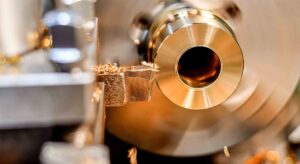
CNC Machining Bronze
There are many types of bronze, with commonly used ones including phosphor bronze, tin bronze, and aluminum bronze. Additionally, there are less commonly used types like beryllium bronze, silicon bronze,

PEEK CNC machining
Polyetheretherketone (PEEK) is a special type of high-performance polymer material known for its high mechanical strength, resistance to high temperatures, impact resistance, flame retardancy, acid and alkali resistance, hydrolysis resistance,
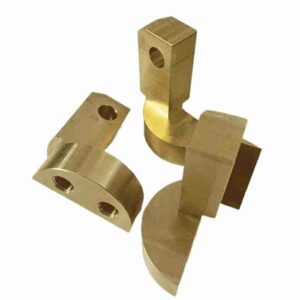
Copper CNC Machining
Copper, also known as pure copper, is classified into T1 to T44 based on its purity, with a higher number indicating a higher impurity content. It is also referred to

